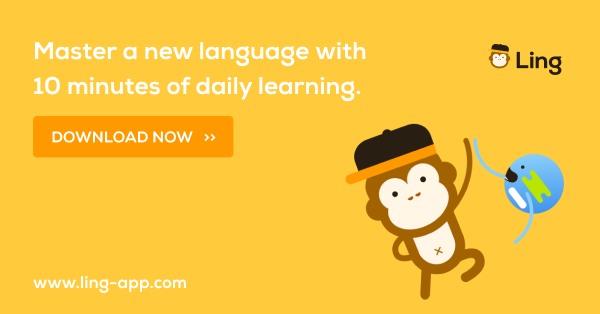Visual Learning: Strategies for Language Acquisition
Visual learning uses images to boost understanding and memory, especially when learning new languages.
This article explores visual learning and its amazing benefits for mastering new languages. You ll find practical ways to include visuals in your studies and tips to optimize their effectiveness. It also tackles common challenges you might face during your language learning journey. Join us as we discover how visual aids can transform your experience!
Contents
- Key Takeaways:
- What is Visual Learning?
- How Visual Learning Aids Language Acquisition
- Strategies for Incorporating Visuals in Language Acquisition
- Maximizing the Benefits of Visual Learning
- Overcoming Challenges in Visual Language Acquisition
- Frequently Asked Questions
- What is visual learning?
- Why is visual learning important for language acquisition?
- What strategies can I use for visual learning in language acquisition?
- Can visual learning be used for all languages?
- How can I incorporate visual learning into my language class?
- Are there drawbacks to using visual learning for language acquisition?
Key Takeaways:
- Visual learning is a great tool for learning languages, utilizing images and graphics to enhance understanding and memory.
- Using visual aids boosts your understanding, pronunciation, and overall language skills.
- To make the most of visual learning, it s essential to use effective techniques and address potential obstacles, such as translation and cultural differences.
What is Visual Learning?
Visual learning is a powerful teaching method that uses pictures and graphics to enhance comprehension. This method is especially beneficial for English language learners and those who learn better with visuals, as using visual aids to enhance language learning can significantly improve retention and engagement.
This approach employs various visual aids, including infographics, vocabulary posters, and visually rich worksheets, to make challenging ideas easier to grasp. Visuals create memorable images that improve understanding and promote success in learning.
Defining Visual Learning and Its Benefits
Visual learning is acquiring knowledge through visual aids that enhance understanding and retention. This approach is fantastic for students, simplifying complex ideas and serving as an effective memory tool.
Incorporating images, diagrams, and videos into your study routine not only improves memory retention but also significantly boosts comprehension. Studies show that visual methods help various types of learners, allowing for better organization and connection of ideas. To enhance your language skills further, explore the top 10 language learning strategies you need to know.
How Visual Learning Aids Language Acquisition
Visual learning plays a pivotal role in language acquisition by linking new words with familiar images. This method assists English language learners by providing helpful visuals to bridge gaps in understanding.
The Connection Between Visuals and Language Learning
The connection between visuals and language learning is strong! Visuals enhance your understanding by making vocabulary relatable and easier to grasp. By using images, diagrams, and videos, educators can create an engaging environment that caters to your learning style.
For example, flashcards with pictures help you quickly connect words to their meanings, reducing confusion while boosting vocabulary acquisition. Visual aids like infographics and storyboards simplify complex grammar into easily digestible formats. Additionally, consider using tips for maximizing your language learning toolbox to enhance your study methods.
Strategies for Incorporating Visuals in Language Acquisition
Incorporating visuals into language acquisition requires thoughtful planning to enrich the learning experience. Effective techniques include using interactive content such as flashcards, infographics, and vocabulary posters that align with your curriculum goals.
Effective Techniques and Tools for Visual Learning
Techniques like mnemonics, mind mapping, and color-coding elevate comprehension and retention. These methods transform abstract concepts into tangible ideas for meaningful engagement!
Mnemonics use vivid imagery and catchy phrases to help you recall challenging topics. Mind mapping provides a visual representation of ideas, making it easier to understand their relationships.
Color-coding enhances memory by associating specific colors with themes, creating a visual hierarchy for efficient note navigation.
Maximizing the Benefits of Visual Learning
To maximize the benefits of visual learning, adopt a thoughtful approach that prioritizes student engagement and personalized learning experiences.
Tips for Optimal Use of Visuals in Language Learning
Choose resources that align with your instructional goals while effectively engaging learners. Interactive apps and digital resources can elevate visual engagement significantly.
This approach accommodates diverse learning styles while enhancing comprehension and retention. Utilize tools like Canva and Google Slides to create visually striking presentations that illustrate vocabulary in meaningful contexts. For more effective results, consider these visual strategies for better language learning.
Overcoming Challenges in Visual Language Acquisition
Overcoming challenges in visual language acquisition is crucial for a successful learning environment. Common issues include learner anxiety and difficulties in interpreting visual aids.
Addressing Common Obstacles and Solutions
To address obstacles in visual language acquisition, understand your emotional and cognitive landscape. Anxiety about language proficiency can hinder engagement, but incorporating supportive visuals can help alleviate these concerns.
Challenges with vocabulary retention and grammatical structure can lead to frustration. Using visual aids like flashcards, infographics, and interactive storytelling can make learning engaging and memorable.
Frequently Asked Questions
What is visual learning?
Visual learning is a teaching method that uses pictures and videos to help students understand and remember information better.
Why is visual learning important for language acquisition?
Visual learning helps students connect images with words, aiding in memory and understanding of new vocabulary and grammar rules.
What strategies can I use for visual learning in language acquisition?
Incorporate real objects, pictures, mind maps, and graphic organizers to help students grasp language concepts effectively.
Can visual learning be used for all languages?
Yes! Visual learning is a universal method that enhances comprehension and retention across various languages.
How can I incorporate visual learning into my language class?
Add visual learning easily by using multimedia resources like videos and online images. Encourage students to create their own visual aids!
Are there drawbacks to using visual learning for language acquisition?
Visual learning may not suit every student and can struggle with complex language concepts, so it’s best used alongside other methods for a balanced approach.



